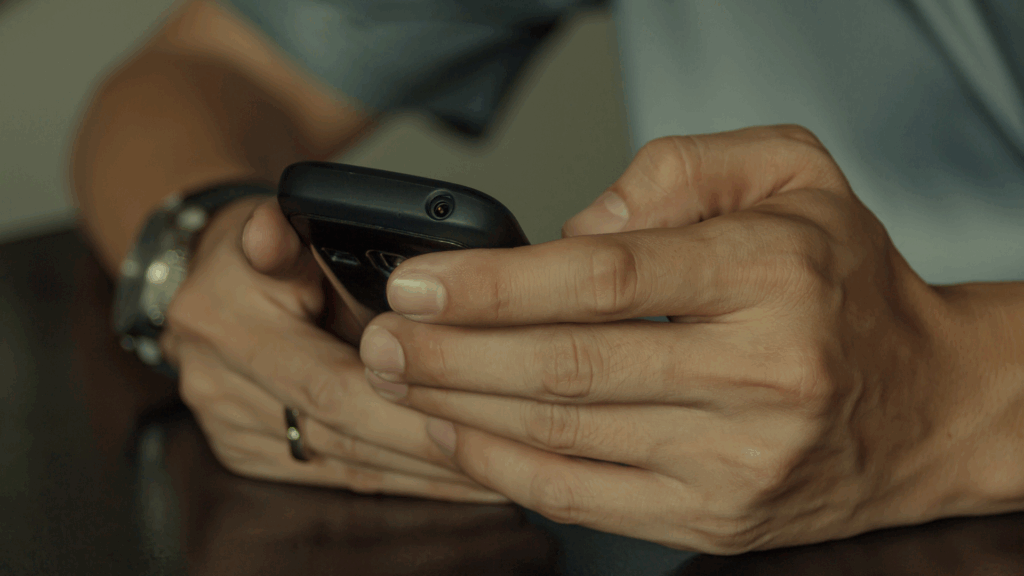Walking through Phoenix, you notice how many folks keep their eyes glued to their phones, but not everyone can afford that luxury. The Lifeline program might cut down your phone or internet bill if you’re living in Phoenix, AZ and money’s tight.
There’s a catch, you have to fit certain income brackets or already be on some federal or Tribal aid (like SNAP or Medicaid). Figuring out if you qualify isn’t too hard, just a few steps. You’ll need to gather some paperwork, check your eligibility, and then start your application. Makes staying connected a little less stressful.
Key Takeaways
- A lot of people in Phoenix can get Lifeline if their income’s low enough or they’re already on certain aid programs.
- With the right papers, applying’s pretty straightforward, just go through the National Verifier or talk to a local provider.
- Only one Lifeline discount per household, and you’ve got to prove you still qualify every year or you’ll lose it.
Eligibility Criteria for Lifeline in Phoenix, AZ
You see a lot of people in Phoenix trying to figure out if they can get Lifeline, and honestly, it’s not always clear-cut. Flyers taped to bus stops, websites with small print, all saying different things about who gets in and who doesn’t. It’s easy to get turned around. The real question, who actually qualifies?
Income-Based Qualification
Federal Poverty Guidelines Thresholds
Most folks start by looking at their income, and that’s probably the right move. Lifeline in Arizona sticks tight to the federal poverty guidelines. For 2025, the numbers aren’t up for debate. If your household’s yearly income is at or under 135% of the Federal Poverty Guidelines, you’re in. Here’s what that looks like for Phoenix:
- 1 person: $21,128
- 2 people: $28,553
- 3 people: $35,978
- 4 people: $43,403
- 5 people: $50,828
- 6 people: $58,253
- 7 people: $65,678
- 8 people: $73,103
- Add $7,425 for each extra person
People go through their pay stubs, sometimes with a calculator, trying to make sure they count every dollar. You have to use gross income (that’s before taxes), and you have to count everyone living in your house. Miss one, and you’ll get a rejection letter. [1]
Acceptable Proof of Income
It’s not enough to say you qualify, you have to show it. The National Verifier and the folks running Lifeline in Arizona want to see real documents. Usually, that means:
- Last year’s full federal or state tax return (not just the summary)
- Three recent, back-to-back pay stubs
- A signed and dated letter from your employer
Best to have everything ready before you start, otherwise you’ll end up stuck halfway through. If you’re self-employed, bank statements might work, but sometimes they’ll ask for more. Paid in cash? You’ll need a letter from whoever pays you. They do check, so don’t try to cut corners.
Program Participation Qualification
Qualifying Government Assistance Programs
Not everyone gets in through income. A lot of people qualify because they’re already on certain government programs. In Phoenix, these are the main ones:
- SNAP (what people still call Food Stamps)
- Medicaid
- Supplemental Security Income (SSI)
- Federal Public Housing Assistance (FPHA)
- Veterans Pension or Survivors Benefit
If you’re on any of these, you just need to show a current award letter or benefits statement with your name and program ID. No room for error there. [2]
Tribal Lands Expanded Eligibility
Living on Tribal lands in Arizona brings extra options and a bigger discount. Some programs are only for Tribal residents:
- Bureau of Indian Affairs General Assistance (BIA)
- Tribal Temporary Assistance for Needy Families (Tribal TANF)
- Food Distribution Program on Indian Reservations
- Head Start (if you meet the income standard)
We once helped a family from Gila River who didn’t realize they could use their Food Distribution Program letter for Lifeline. The discounts are bigger and the process is slightly different. If you’re on Tribal lands, always ask about these options.
Survivor and Special Group Eligibility
Safe Connections Act Provisions
A lot of people don’t know about this. Survivors of domestic violence, human trafficking, or similar crimes can qualify under the Safe Connections Act.
The rule: If your household income is at or below 200% of the Federal Poverty Guidelines, or if you’re on WIC, the School Lunch Program, or have a Pell Grant, you can get Lifeline. This is more lenient than the regular rule. You’ll need to provide proof of a line separation request or other documentation showing financial hardship.
Additional Qualifying Programs
The current list also includes:
- WIC (Women, Infants, and Children program)
- Free or Reduced-Price School Lunch or Breakfast Program
- Pell Grant (current award year)
If you’re a survivor, you can get up to six months of emergency Lifeline support. We’ve seen people get immediate help with the right paperwork.
Required Survivor Documentation
Here’s what usually works:
- Letter from a shelter, attorney, or caseworker
- Court documents for restraining orders or custody
- Federal Pell Grant notification
You do not have to explain your story in detail. The documentation is enough.
Household and Residency Rules
One Benefit Per Household
Lifeline is strict about this. Only one Lifeline benefit per household, no matter how many eligible people live there. A household is defined as people who share income and expenses.
So if there are two families under one roof but they keep finances separate, each can get their own benefit, but you’ll need to fill out a “one per household worksheet” during the application.
Exceptions and Clarifications
There are rare exceptions. For example, residents of nursing homes or group shelters may qualify for more than one benefit per address, but only if they’re considered separate economic units. If in doubt, check with the National Verifier.
Special Considerations
Seniors 65 and older sometimes get extra discounts depending on the provider. Non-citizens can qualify if they have legal residency and the proper documentation. Coverage in Phoenix is good, but some rural Tribal areas have fewer provider options. Always check coverage maps before applying.
Lifeline Application Process in Phoenix, AZ
Credits: Dollar Pro
The first Lifeline application We helped with was a mess. Half the documents were missing. The address on the utility bill didn’t match the lease. The application got sent back twice. So we learned: Preparation is everything.
Preparing to Apply
Required Documentation Checklist
Before you sit down, gather:
- Proof of income or program participation (see above)
- Proof of identity (state or Tribal ID, driver’s license, passport)
- Proof of address (utility bill, lease, mortgage statement)
No P.O. boxes allowed. Physical address only. If you’re unhoused, some shelters can provide a letter.
Common Documentation Issues
The most common reasons for Lifeline application Phoenix delays:
- Mismatched addresses (utility bill says one thing, ID says another)
- Expired documents (don’t use last year’s Medicaid card)
- Illegible scans or photos (use a scanner if possible)
Application Submission Options
National Verifier Portal
Most people in Phoenix use the National Verifier site (lifelinesupport.org). Here’s how it works:
- Create an account or log in
- Fill out your personal and household info
- Upload documents (clear photos or PDFs)
- Submit and wait for confirmation
You’ll get a tracking number. Keep it.
Paper Application and Provider Assistance
If online isn’t your thing, you can print an application and mail it to:
Lifeline Support Center
P.O. Box 7081
London, KY 40742
Or, visit a participating Lifeline provider in Phoenix. They’ll help fill out the application and submit it for you. Some even scan your documents on the spot.
Choosing a Lifeline Provider
Service Plan and Device Options
You can get a discount on phone or internet, not both. If you want to keep your current phone, check if it’s compatible (BYOD: bring your own device). Most providers have compatibility checkers on their websites.
What to Expect After Applying
Application Review Process
Most applications are processed in a few days. Sometimes it takes up to two weeks if documents need a manual review. You’ll get an email, letter, or text with the decision.
Notification Method
If approved, you’ll get an approval letter and instructions for enrolling with your chosen provider. If denied, you’ll be told why.
Troubleshooting and Appeals
If you’re denied, check the reason. Common problems:
- Incorrect or missing documents
- Name/address mismatch
- Duplicate application
You can appeal by uploading new documents or calling the Lifeline Support Center at (800) 234-9473. They’ll walk you through the fix.
Maintaining Lifeline Benefits
Getting approved is just the first step. Keeping your benefit is just as important. We’ve seen people lose service because they missed recertification emails.
Annual Recertification Requirements
Recertification Steps
Every year, you need to prove you still qualify. USAC (the Universal Service Administrative Company) will contact you by mail or email. You’ll have 60 days to respond.
You’ll need:
- Current proof of income or program participation
- ID
- Updated address if you’ve moved
Updating Household Information
Life changes. So do households. If your income goes up or you lose program eligibility, you have to tell USAC right away. If someone moves in or out, that might change your eligibility.
Switching Providers and Portability
Changing Service Providers
You can switch providers anytime, but you have to transfer the benefit. Ask your new provider to start the transfer. Usually takes a few days. You can only switch once per month.
Combining with Affordable Connectivity Program
Some people qualify for the Affordable Connectivity Program (ACP) as well. You can get both if you meet the requirements, but you have to apply for each separately. Apply for Lifeline first, then ACP.
Compliance and Program Rules
Avoiding Common Mistakes
Don’t apply for more than one benefit per household. Don’t send incomplete applications. If you have questions, ask before submitting.
Loss of Eligibility
If you’re no longer eligible, tell USAC. If you lose your job or program benefits, you can reapply when you qualify again.
Additional Lifeline Support and Resources

There’s a whole network of help out there, but it’s not always easy to find. Here’s what we see working in Phoenix.
Community and Local Assistance
Phoenix-Based Application Help
Some local agencies and nonprofits will help you apply for Lifeline for free. They can scan documents, fill out the online form, and answer questions. Look up your local library or the Free Government Phone by State directory.
Multilingual Application Assistance
If English isn’t your first language, ask about Spanish or other language support. Many providers and agencies offer this.
Help for Special Circumstances
If you’re a survivor of abuse, recently unemployed, or unhoused, many nonprofits in Phoenix can help with documentation or provide safe mailing addresses.
Lifeline Provider Comparison
Service Area and Plan Features
Always check the coverage map for your provider, especially if you’re on Tribal lands or in rural Maricopa County. Some providers have better coverage than others.
Customer Support and User Experience
Check online reviews before choosing a provider. Some have better customer service than others. It matters when you need help fast.
Self-Check and Quick Reference Tools
Step-by-Step Eligibility Checklist
- Is your income at or below the limit?
- Do you already participate in a qualifying program?
- Do your documents match your application?
- Is everyone in your household counted?
- Have you chosen a provider with good coverage?
If you can answer yes to each, you’re ready to apply.
Glossary of Lifeline Terms
- Lifeline National Verifier: The federal system that checks applications.
- USAC: Universal Service Administrative Company, manages Lifeline.
- SNAP: Food benefits program.
- FPHA: Federal Public Housing Assistance.
- BYOD: Bring Your Own Device.
FAQ
How does the Lifeline household size affect your Lifeline eligibility in Arizona?
Lifeline eligibility in Arizona depends on your total household size and your income. For example, a one-person household must fall below a different income level than a four-person household under the Lifeline federal poverty guidelines. If you live in Phoenix and share expenses with roommates or relatives, you still count as one household only if you all share income. Make sure to submit correct Lifeline proof of income when applying.
Can you qualify for the Lifeline program in Phoenix if you receive Veterans Pension or Tribal TANF?
Yes, you can meet Lifeline program requirements in Phoenix through Veterans Pension or Tribal TANF. These are part of the recognized government assistance programs. If you receive benefits like Lifeline AHCCCS, Lifeline SNAP eligibility, or Lifeline FPHA as well, you’re likely eligible. When completing the Lifeline application Phoenix residents use, you must show Lifeline proof of participation in one or more programs like these.
What if you’re living on Tribal lands near Phoenix? How does that change Lifeline eligibility?
Lifeline Tribal lands discount offers extra support to qualifying residents near Phoenix. You must still meet Lifeline income limits Arizona uses, or qualify through programs like Lifeline Medicaid Arizona or Lifeline Head Start. If your household receives benefits from Lifeline Bureau of Indian Affairs services or the Lifeline Food Distribution Program, you’re eligible for a higher discount. Use the Lifeline Arizona application with Tribal options selected.
Is a Pell Grant or school lunch program enough to meet Lifeline program requirements in Arizona?
Yes. The Lifeline program Arizona accepts students who receive a Pell Grant or take part in the Lifeline school lunch program. You can qualify for a Lifeline free phone Arizona providers offer or get a Lifeline internet discount. In Phoenix, students or parents applying must still show documents like Lifeline eligibility verification or Lifeline documentation during the Lifeline application process.
What if you’ve already used Lifeline in another state but just moved to Phoenix?
You can transfer your benefit, but the Lifeline eligibility check must be redone. The Lifeline National Verifier will use Arizona rules, which means new Lifeline income limits and Lifeline Arizona requirements apply. You may need to recertify with your new Lifeline provider Arizona recognizes. Make sure to cancel service in the old state to meet the Lifeline one per household rule, then reapply through Lifeline apply online options.
Conclusion
If you’re unsure, ask for help. Save every document, double-check your application, and set a reminder for annual Lifeline recertification.
This program can be the difference between missing a job interview or staying connected to your doctor. We’ve seen it change lives here in Phoenix. If you think you meet the Lifeline eligibility Arizona guidelines, don’t wait. The process is worth it.
Apply now through Free Government Phone by State to get started.
References
- https://aspe.hhs.gov/topics/poverty-economic-mobility/poverty-guidelines
- https://www.lifelinesupport.org/do-i-qualify/


